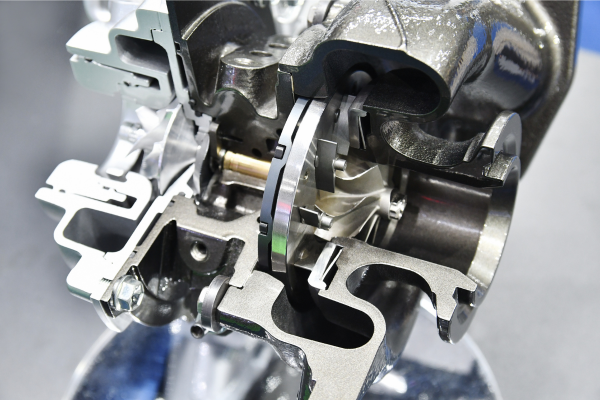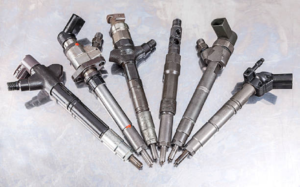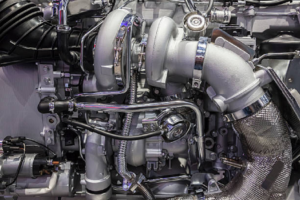In automotive engineering, when your vehicle is graced with a turbocharger, an indispensable constituent known as the “wastegate” takes center stage. This enigmatic wastegate is pivotal in orchestrating the turbocharger’s symphony of power and efficiency.
To safeguard the optimal operation of your turbocharger and stave off potential tribulations, it becomes imperative to acquaint oneself with this enigmatic component’s essence and modus operandi.
Should the turbocharger deviate from its designated course, dire repercussions may befall both the turbocharger itself and the very vehicle it propels. We invite you to embark on a comprehensive exposition to delve into how a turbo wastegate orchestrates its ballet and ensures a harmonious motoring journey.
Turbocharger Wastegate — A Deeper Insight
A turbocharger wastegate assumes the mantle of a gatekeeper, akin to a sentinel guarding the flow of exhaust gases destined for the turbocharger’s turbine. This turbine endows the turbocharger with its prowess, bequeathing your engine with an augmented surge of might.
Let us traverse the labyrinthine corridors of understanding: how does the turbocharger wastegate weave its intricate tapestry?
The wastegate manifests as a relatively unassuming valve, responsive to either pneumatic pressure or electrical impulses. It remains steadfastly shut until the air pressure within the turbocharger vaults to an unmanageable zenith. The wastegate unfurls its wings at this juncture, permitting select exhaust gases to emancipate themselves.
This calculated exodus serves the dual purpose of quelling the turbocharger’s internal pressure while tempering the frantic gyrations of its turbine, aligning them harmoniously with the engine’s exigencies. Thus, this elaborate choreography bestows upon your engine newfound vigor and celerity.
Different Varieties of Turbocharger Wastegates

Within turbochargers, two distinctive breeds of wastegates emerge: the internal and the external.
The internal wastegate finds its abode within the bosom of the turbocharger and is commonplace in conventional automobiles. On the other hand, the external wastegate finds favor in the precincts of high-performance engines, such as those adorning the mantles of race cars, as they must contend with the crucible of elevated pressure.
The choice between the internal and external variants hinges upon the specific imperatives and the pursuit of optimal performance within your turbocharged domain. The internal wastegate, characterized by its simplicity and frugality, may bear certain limitations in the crucible of high-performance exigencies.
In contrast, the external wastegate, though entailing a loftier price tag and necessitating modifications, presents an alluring proposition. It offers a vaster canvas for control and performance enhancements, rendering it the favored selection for those intent on extracting the zenith of potency from their turbocharged powerplants. Ultimately, your verdict should be an orchestrated concerto, harmonizing your aspirations, fiscal constraints, and your vehicle’s unique demands.
Is Maintaining the Turbocharger Wastegate Necessary?
It’s important to not only check if your wastegate matches your turbocharger but also to make sure it doesn’t harm anything. That’s why you should have it checked regularly to make sure it’s doing its job right. If it’s not working well, your engine won’t run as fast as it should. If you think it’s not working right, see a mechanic.
What Happens When a Turbocharger Wastegate Fails?
Wastegates can go wrong in different ways. One common issue known to BMW fans is the “wastegate rattle.” It’s a problem in cars with the N54 engine, like the E9X 335i and 135i. As time goes on, this annoying rattling noise can lead to a weakened wastegate. When that happens, too much exhaust gas escapes, and not enough reaches the turbocharger to make extra power.
Wastegates can also get stuck either open or closed. If they’re stuck open, you’ll lose power. If stuck closed, it can damage the turbocharger and the engine. Another problem related to wastegates is called “boost creep.” It occurs when the boost pressure goes higher than it should (measured in PSI). It often happens when the wastegate can’t release enough exhaust gas.
Conclusion
The turbocharger wastegate is the unassuming component that acts as the engine’s guardian, ensuring the turbocharger functions optimally and without hiccups.
Maintaining and taking good care of your wastegate protects your engine’s ability to perform at its best. It’s a small but crucial part of the puzzle that keeps your vehicle running smoothly and powerfully. So, make sure to give it the attention it deserves to enjoy the full potential of your engine.
FAQs
Where is the wastegate located on the turbo?
The wastegate should be installed on the exhaust manifold before the turbocharger. The better you position it, the smoother it will work, regardless of the size of the wastegate.
Does wastegate increase HP?
Interestingly, a wastegate can be one of the few parts in your entire engine system that can be reduced in size as you boost or increase horsepower, but this only applies in specific situations. Its primary purpose is to direct exhaust gases away from the turbocharger to control turbine speeds and boost pressure.
Is a turbocharger suitable for diesel engines?
Like any other engine, adding a turbocharger to a diesel engine can significantly boost its efficiency and power, especially when paired with an intercooler.







